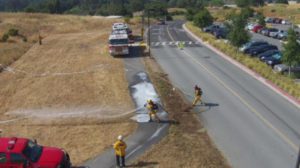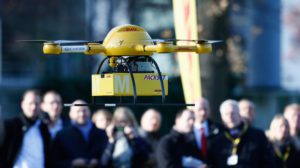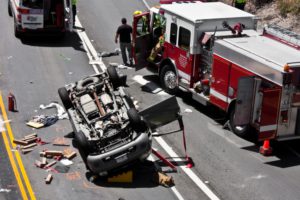The old adage, “The sky is the limit” no longer holds true to enthusiasts of aerial photography and videography using drones. More and more, drones allow us to photograph and video from an entirely new and exciting perspective. Our obsession with a view from the top down continues to grow, fueling the steady growth of drone hobbyists and commercial users alike.
A 2018 article in The Observer aptly summed up our fascination with aerial photography and videography using drones. Author Kaitlyn Flannagan wrote, “While aerial photographs proved an important tool for war starting with WWI, and then made themselves useful for cartographic purposes, they’ve also never lessened in demand for their somewhat simpler use: as objects that inspire awe.”
Whether your purpose in investigating drone use is for commercial uses or strictly for personal enjoyment, everyone must start with the basics. 1UP Drones is a leader in aerial photography and videography using drones, and this handy beginners guide is a great place to start your drone adventures.
How Choose the Right Multirotor Drone or Aerial Platform
New drone models with improved capabilities are constantly being developed and which one is right for you is a complex question. For beginners, it makes sense to purchase a small, simple, and relatively inexpensive model in order to become accustomed to handling a drone. After all, if you crash a $5,000 drone on your first flight, it is likely you won’t buy another.
As your skills improve, and you begin experimenting with aerial photography and videography using drones, you can begin exploring the options available. Ask yourself some questions to determine your needs:
- Is my drone for commercial or hobby use?
- What kind of image quality do I need?
- How important is hovering capability?
- How important is flight time?
- Do I need intelligent functions?
- How much money do I have to spend?
Getting a clear idea of what you need and some experience handling a smaller drone will prepare you for upgrading to a larger, more capable model. 1UP Drones can provide suggestions on drone models that are good bases for video and photography as well as some useful accessories. Time spent talking with other, more experienced drone operators is a worthy investment. The bottom line is, purchase a drone that meets your needs and current skill set.
Study the Instruction Manual of Your Drone to Understand its Features and Capabilities
Your drone’s instruction manual is perhaps its most important feature. Spend time getting to know its contents well, especially the basic features and controls. Most beginner drone models can be piloted with your Android or iOS smartphone or tablet, so pay particular attention to these foundational features. Do you have enough memory on your tablet or smart phone? Will the memory speed be sufficient to integrate with the drones you plan to use?
Smartphone Feed
If using your drone with a smartphone or tablet, be sure you understand the application like DJI Go4 instructions on how to integrate your drone with your mobile device. They will likely connect with your device’s wi-fi feature. Depending on the drone model and software you are using, you should be able to monitor the drone’s battery level, GPS coordinates, and other vital flight information.
Smart Modes
Different models of drones and software will include varying intelligent flight modes. These allow for more complex shots with aerial photography and videography using drones. Some intelligent flight modes include:
- Stabilization
- Follow Me
- Waypoints
- Course Lock
- Home Lock
- Points of Interest
These advanced modes allow you to capture shots that would once have required long practice and training. We spend a great amount of time in our advanced training classes going through these features.
Tracking
Keeping track of your drone is of vital importance. Laws in different areas prohibit drones to be used in restricted airspace, so knowing your drone’s location not only helps you keep from losing it, it keeps you legal and others safe. Most drone software has basic tracking capabilities, but more sophisticated tracking applications are available.
Geofencing
Geofencing is a term that refers to the creation of virtual fences around areas or points of interest to keep drones away. Your drone will need a reliable navigation system and autopilot software to create and/or interact with a fence. This electronic fence, or boundary, is created by hardware and software that dictates its parameters. As your drone approaches an existing geofence, it detects the fence and warns you of its location.
Fly Confidently and Safely While Obeying the Law
There is much more to using a drone than basic piloting skills. These are important, but just as learning the rules of the road are an important part of driver’s education, learning the laws that govern drone use is also critical.
Federal, State, and Local Drone Regulations
Being new to the hobby, you will benefit from practice and flight exercises before you begin. This includes helping you to understand and learn the rules and regulations that govern drone use in your area. Why? Drones have the capacity to cause major disruptions by hitting people, buildings, or aircraft.
The US Federal Aviation Administration (FAA) has established basic guidelines for all drone users, both hobbyists and commercial operators. Here are relevant FAA websites with specific instructions:
- FAA Website for Unmanned Aircraft Systems
- FAA Fact Sheet for Small Unmanned Aircraft Regulations (Part 107)
- FAA B4UFLY Mobile App for Smartphones (shows local, interactive maps and information about restricted airspace zones)
Check with your state and local municipalities for current guidelines and prohibitions regarding commercial and/or hobbyist drone operations. We recommend downloading the FAA B4UFLY app above for additional guidance and information about local areas.
Always Follow a Preflight & Postflight Checklist
Reviewing a preflight checklist is an important step when preparing for drone flight. A set list of items should be reviewed to ensure that your unit is ready for flight, and all components are in good working order. Most drone issues can be avoided if you pause to check all your unit’s components, as well as local flight regulations, weather, and your immediate surroundings. A good preflight checklist should include:
- Fly zone
- Weather
- Surroundings
- Battery
- Settings
- Propellers
- Motor
- Controls
Put your drone in beginner mode and take it for a test drive in a safe, unobstructed area. Be sure that all controls are functioning normally and that the unit makes the correct movements when using the controls. Test to see how it is affected by any winds. Just like any other skill, proficiency comes through practice.
How to Capture Aerial Shots and Videography That Tell a Story
The two most important elements in aerial photography and videography using drones are how well you can operate a drone, and what your drone is capable of doing. The cool thing about drones is, even a beginner with basic equipment can capture beautiful shots and videos after learning how to operate their drone, and becoming acquainted with what it can do.
A great tip for beginners is to always use Smart Mode. Consider this mode as Beginner Mode, because it really helps you do things with your drone without knowing much about controlling intricate modes of flight. For example, If you’re inexperienced and it’s windy outside, Smart Mode will likely have some sort of stabilization feature that will still allow you to take great shots.
Here are more suggestions for capturing stunning aerial images and video:
- Remember that the fundamental rules of photography still apply, even when using a drone. If you don’t know much about photography basics like leading lines and the golden ratio, then spend some time studying photography before taking to the air.
- Look for symmetry and patterns. Your aerial perspective will allow you to pick out interesting shapes and repeating formations. These always make interesting images.
- Take advantage of light and shadow at different times of day and around large objects.
- Learn the advanced techniques of digital editing. Sometimes the best shots are the ones that you create after your drone is packed away. Good photographers are also good editors.
Are you interested in learning more about drones and aerial photography and videography using drones? Contact 1UP Drones for information about drone training courses that may be available.


